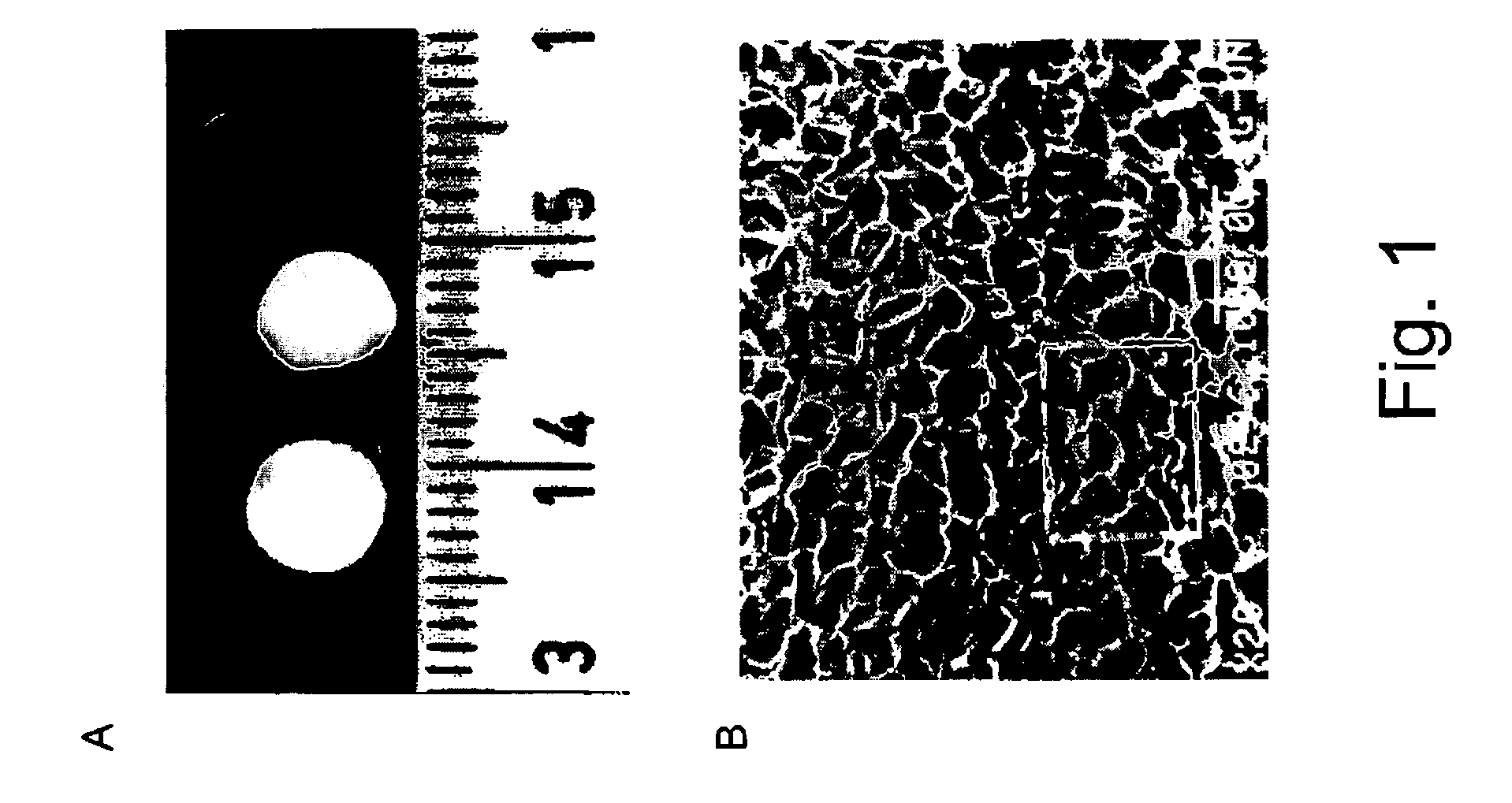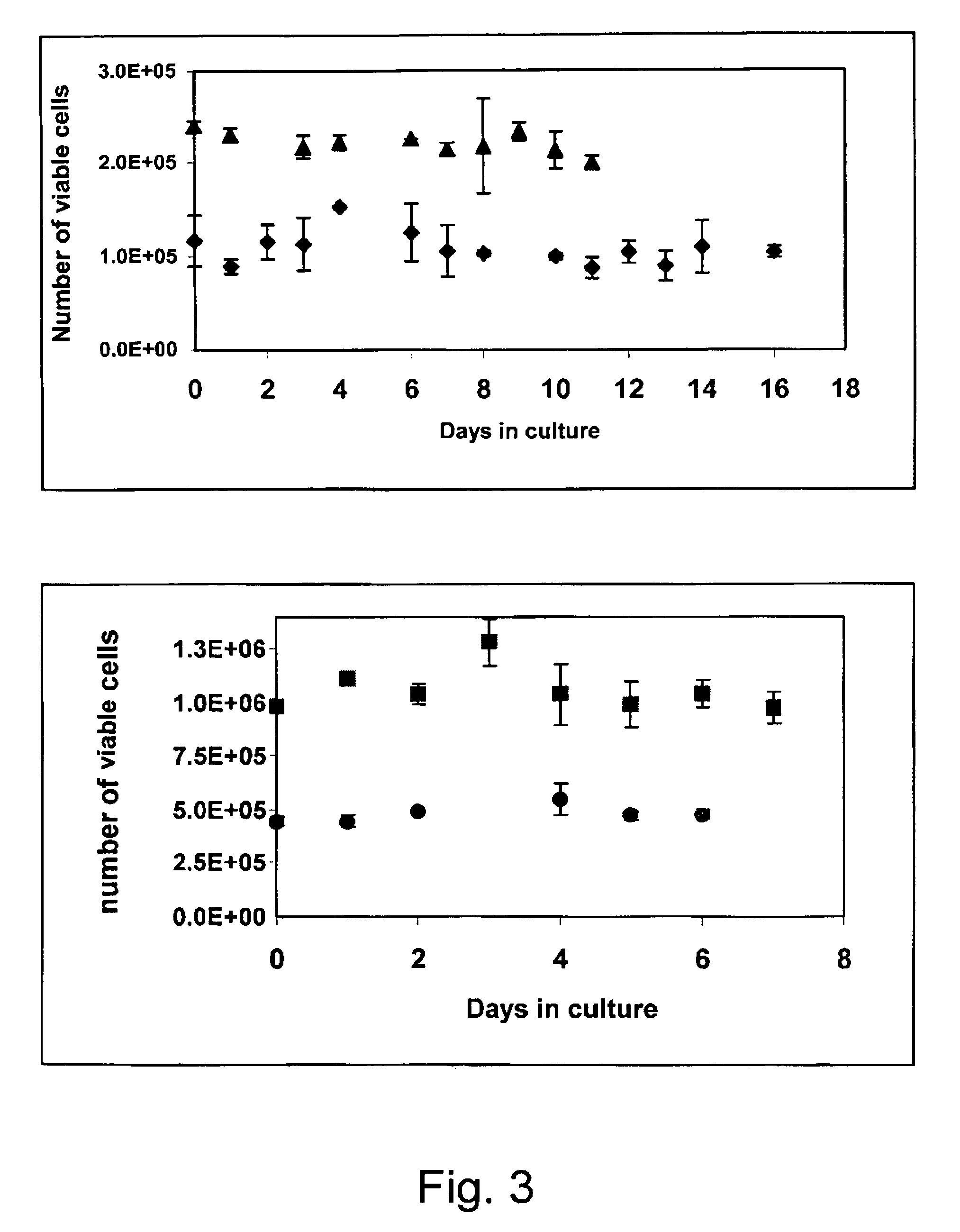Tissue engineered biografts for repair of damaged myocardium
a biograft and myocardium technology, applied in the field of tissue engineered cardiac biografts, can solve the problems of limited success in restoring heart function after myocardial injury, inability to regenerate myocardium, and limited cardiac transplantation strategies, so as to improve cardiac function, prolong the survival of cells, and the effect of high degree of neovascularization
- Summary
- Abstract
- Description
- Claims
- Application Information
AI Technical Summary
Benefits of technology
Problems solved by technology
Method used
Image
Examples
example 1
Tissue Engineering of a Cardiac Tissue from Fetal or Neonatal Cardiac Cells within 3-D Alginate Scaffolds
Preparation of 3-D Alginate Scaffolds:
[0047]The 3-D scaffolds were prepared as previously described (Shapiro and Cohen., Biomaterials, 18 583–90, 1997) from a pharmaceutical-grade alginate, Protanal LF 5 / 60 (Pronova Biopolymers, Drammen, Norway), which has a G contents (65–75%) and solution viscosity (1% w / v, 25° C.) of 50 cP. Scaffold preparation consists of (i) Preparation of sodium alginate stock solutions, at concentrations of 1–3% (w / v). (ii) Cross-linking of the alginate by adding, dropwise, the bivalent cross-linker, e.g., calcium gluconate. (iii) Freezing the cross-linked alginate and (iv) lyophilization to produce a sponge-like scaffold. The sponges were sterilized using ethylene oxide gas apparatus. The residual ethylene oxide was removed by aeration of the samples with warm air flow. The sponges were stored in laminated bags, at room temperature, until use. A photograp...
example 2
Tissue Engineering of Capillary-Like Tubes from Endothelial Cells Seeded within 3-D Alginate Scaffolds, In Vitro
Culturing of Endothelial Cells within the 3-D Alginate Scaffolds:
[0053]For the isolation of Aortic Endothelial Cells, the aorta was aseptically collected, stripped of adventitia and sliced into rings. The rings were cultured on a tissue flask in an incubator, at 37° C., without medium. After an hour incubation, DMEM supplemented with 10% FBS, 0.02 μg / ml bFGF, 100 U / ml nystatin, 5 μg / ml insulin, 5 μg / ml transferrin, 5 ng / ml sodium selenite and penicillin-streptomycin, was added. The endothelial cells grew as colonies from the aortic rings, and then were expanded as pure population of endothelial cells. Purity of the cells was analyzed by FACS using anti-von Willebrant Factor antibodies. The endothelial cells were seeded onto the alginate scaffolds at an initial cell density of 1 million per scaffold. The growth medium was supplemented with rHuVEGF165 VEGF (50 ng / ml) (produc...
example 3
Preparation of Composite Alginate Scaffolds Containing Microspheres with Controlled Release Growth Factors
[0055]The microspheres containing the growth factors are prepared from poly(D,L-Lactide-(o-glycolide) (PLGA) (RG502H, Boehringer Ingelheim, Germany) by the solvent evaporation method, based on a double emulsion (Cohen et al., Pharmaceutical Research, 8, 713–720, 1991). The polymer was dissolved in a volatile organic solvent, methylene chloride. An aqueous solution containing the growth factors was added to the polymer solution, and the mixture was homogenized to create an inner emulsion. This emulsion was further emulsified in a second aqueous phase that contained a surface active agent such as poly(vinyl alcohol). The resulting double emulsion was stirred until all organic solvent was evaporated, leaving solid microspheres. To formulate the composite scaffold, the microspheres were suspended in the alginate solution, and scaffold preparation proceeds as described in Example 1.
[...
PUM
| Property | Measurement | Unit |
|---|---|---|
| pore diameter | aaaaa | aaaaa |
| pore diameter | aaaaa | aaaaa |
| pH | aaaaa | aaaaa |
Abstract
Description
Claims
Application Information
 Login to View More
Login to View More - R&D
- Intellectual Property
- Life Sciences
- Materials
- Tech Scout
- Unparalleled Data Quality
- Higher Quality Content
- 60% Fewer Hallucinations
Browse by: Latest US Patents, China's latest patents, Technical Efficacy Thesaurus, Application Domain, Technology Topic, Popular Technical Reports.
© 2025 PatSnap. All rights reserved.Legal|Privacy policy|Modern Slavery Act Transparency Statement|Sitemap|About US| Contact US: help@patsnap.com



